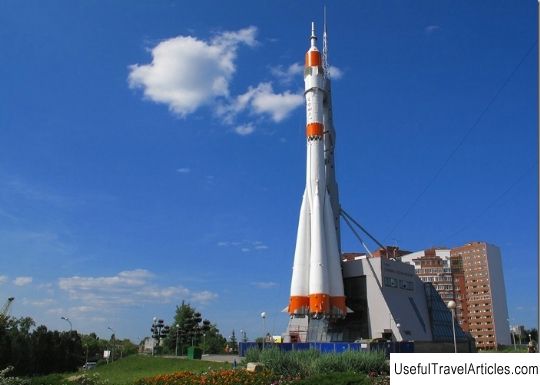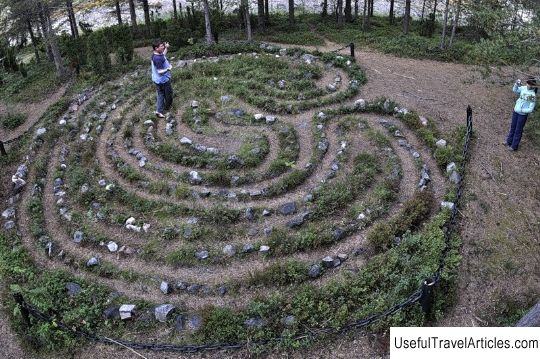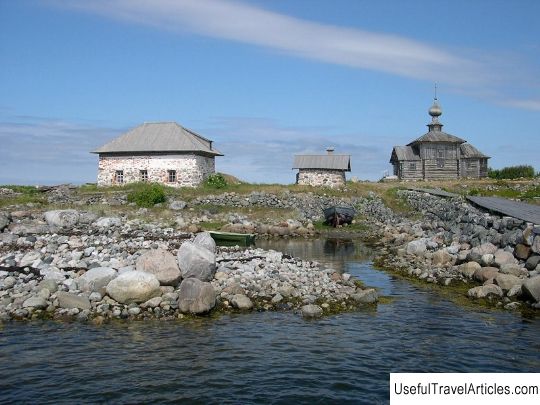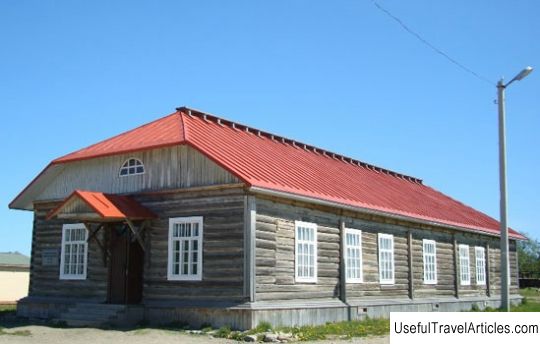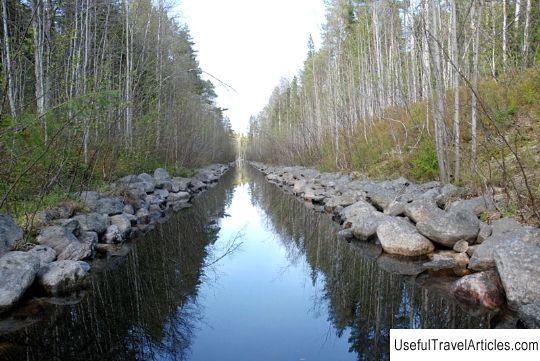Zayatsky labyrinths description and photos - Russia - North-West: Solovetsky Islands
Rating: 7,5/10 (100 votes) 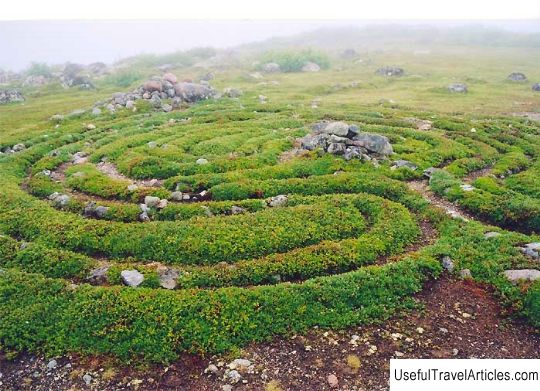
Zayatsky labyrinths description and photos - Russia - North-West: Solovetsky Islands. Detailed information about the attraction. Description, photos and a map showing the nearest significant objects. Photo and descriptionThe sign of the labyrinth in Russia is more extensively represented in two regions: Dagestan and Belomorye. At the moment in Russia the most famous are the White Sea labyrinths, or, as they are otherwise called, "northern labyrinths". The problem of the "northern labyrinths" is expressed in three questions: who, when and why built them in this area? "Northern labyrinths" are spiral figures that represent various systems of passages laid out of small boulder stones ... The sizes of boulders vary in diameter from 3.40 to 24.40 m, their height does not exceed 50 cm. The most noticeable among the “northern labyrinths” is the Solovetsky accumulation of labyrinths. This cluster includes 35 currently known labyrinths, almost a thousand stone embankments, as well as "symbolic" stone displays, which number in dozens. The Solovetsky accumulation of labyrinths is scattered across the islands of the archipelago, but the most significant part is concentrated on the island called Bolshoi Zayatsky, which is located in the south-west of the archipelago, its area is only 1.5 square kilometers. On a small area of the island, called Bolshoy Zayatsky, there is a large number of stone displays of the Solovetsky archipelago. There are 13 labyrinths here, more than 850 boulder mounds. The labyrinths date back to the 1st-2nd century BC. Similar megalithic structures are found in Ireland, Scandinavia, France, as well as in other countries of the world. And perhaps this is evidence that a single civilization lived in these territories for a very long time. There are a large number of scientists hypotheses about the purpose of these structures in the form of stone spirals on the ground. Locals call the labyrinths "Babylon". There is an assumption that the labyrinths are associated with the old cult dances and round dance of the peoples who have inhabited these lands for a long time. There is a hypothesis that these are ancient burials. During excavations that were organized in some labyrinths of the Big Zayatsky Island, the remains of ritual bonfires were found in the center of several of them, but not in all. The next hypothesis is that labyrinths are "fish traps." It was suggested that during low tides the fish could not keep up to find a way out of the labyrinths and, to the delight of local fishermen, remained lying on the ground. Nevertheless, a considerable number of labyrinths were built far from water and are not filled with water at all. There are also hypotheses that the labyrinths are, in fact, "magic fishing nets" that served to carry out magical rituals related to sea fishing. The labyrinth is supposed to be the magic tool of the shamans. Also, some researchers believe that labyrinths are "protective nets", the main purpose of which was to intimidate the souls of dead people so that they could not return to the living. Labyrinths have one entrance, which is also an exit ... If you enter the labyrinth and do not cross the borders, that is, go strictly along the grooves, then after some time (for some labyrinths this time is 5-10 minutes, for the second - more than half an hour) you will leave the same place where you entered. The real purpose of these structures is most likely they will never be able to figure out, for example, the purpose of the pyramids has not yet been figured out - too much time has passed.         We also recommend reading Citta di Castello description and photos - Italy: Umbria Topic: Zayatsky labyrinths description and photos - Russia - North-West: Solovetsky Islands. |
